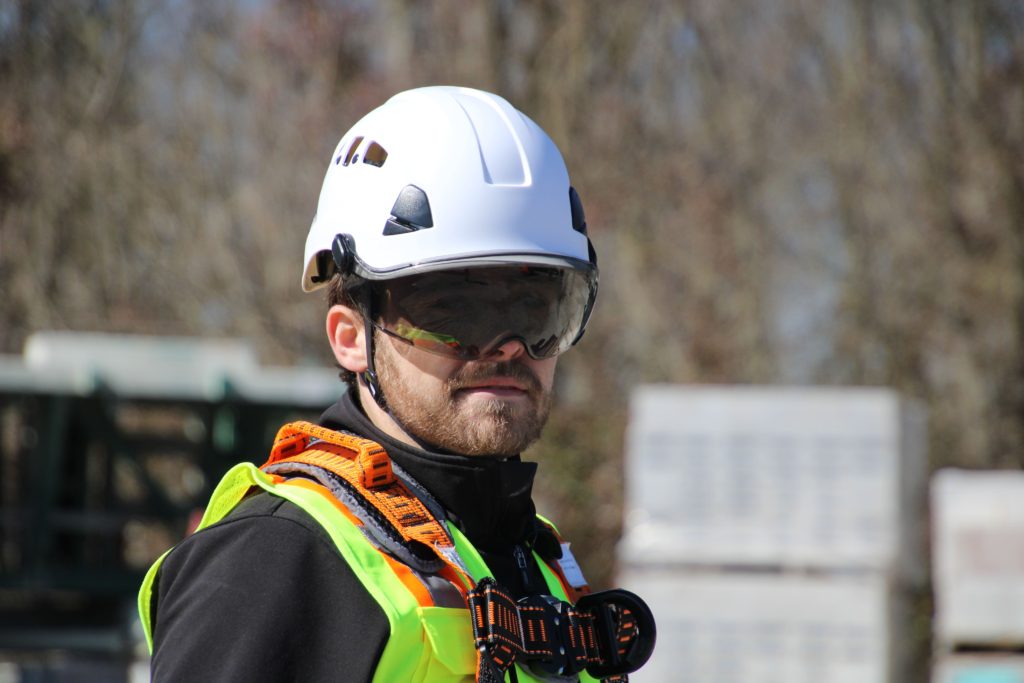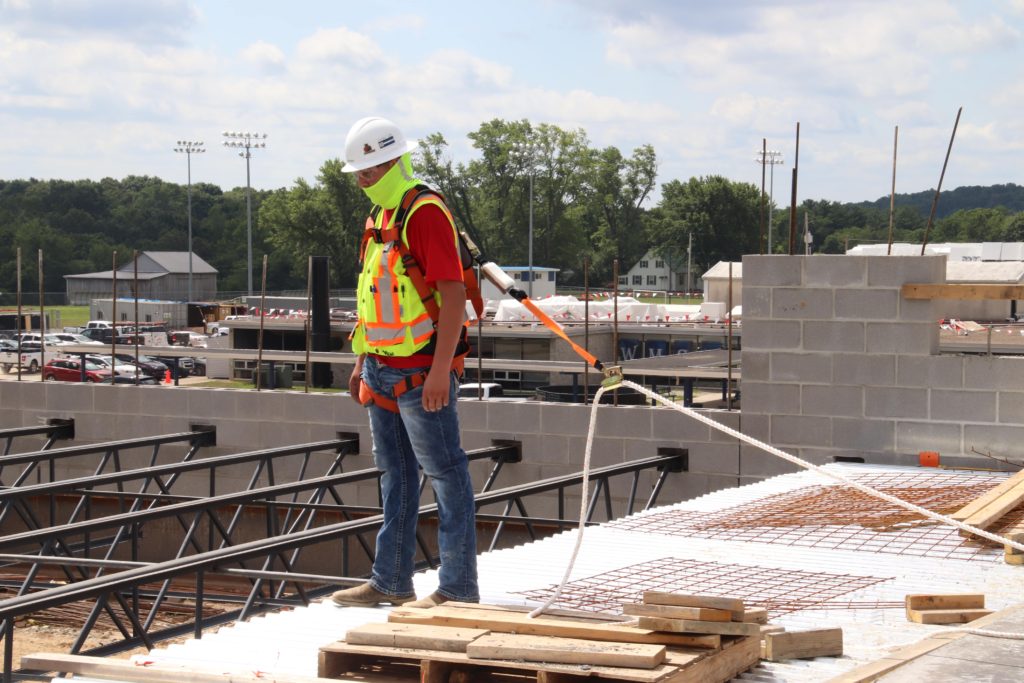Protect What Matters: Understanding Head and Eye Protection
Words and Photos: Malta Dynamics
With all the ways that flying and falling hazards present themselves, working on jobsites can be quite the adventure. Learning about your options for head and eye protection will equip you with the knowledge you need to choose appropriate and compliant safety personal protective equipment. Fortunately, top-notch head and eye protection is a common and inexpensive form of PPE that is widely available and easy to use.

Understanding what the project site might present in the form of a hazard is the first step in determining the head and eye protection needed. For masons, there is a large probability that your hazards will come in the form of falling objects from above or the possibility of workers encountering a fall themselves. For workers that might physically encounter a fall, it's important to equip them with an OSHA (Occupational Safety and Health Administration) compliant personal protective equipment accompanied by a personal fall arrest system, which includes an anchor, full body harness, and connector device. Most jobsites call for the use of head and eye protection for all workers present, so it’s important to know what safety precautions are required by the general contractor and make sure that all safety measures align with the standards of OSHA.
The safety industry is evolving rapidly, with giant leaps forward in the functionality and ergonomic design of personal protective equipment. Head protection technology is becoming more refined and tested to rising safety standards. The classic hard hat is no longer the best and only option for protecting your head on the job. The safety industry is seeing a major uptick in more sophisticated safety helmets that offer superior head protection.
Headwear for protection in the United States is classified by using two sets of criteria: protection from impacts and protection from electricity. So, choosing the right head protection for the job can be simplified by determining the Type and Class that is required.
A helmet’s level of protection from impacts is indicated by its Type:
- Type 1 is designed to protect from impact to the top of the head.
- Type 2 is designed to protect from impact to the top of the head and from lateral impacts off-center or to the back or sides of the head.
A helmet’s level of protection from electricity is distinguished by its Class:
- Class C (conductive): offers no protection from electric shock.
- Class G (general): offers protection from low-voltage electrical conductors
- Class E (electrical): offers protection from high-voltage electrical conductors
Once you figure out the Type and Class of the head protection that your crew needs, the rest is typically uniform. The classic plastic hard hats that we are accustomed to are generally Type 1, Class G. These hard hats consist of an outer shell and an interior suspension harness and are comparable in protection to a Type 1 safety helmet with the addition of a chin strap. All safety helmets include a suspension system for sizing, a chin strap to keep it securely in place, even in the event of a fall, and some models include the option to add a visor for eye protection.
Thousands of people are blinded each year from work-related eye injuries that could have been prevented with the proper selection and use of eye protection. OSHA requires employers to ensure the safety of all employees in the work environment, which means that eye protection must be provided whenever necessary to protect workers against chemical, environmental, radiological, or mechanical irritants and hazards. Although OSHA enforces the rule to wear eye protection, in the United States, ANSI (American National Standards Institute) creates the testing standards for rating the eyewear.

ANSI Z87.1 certified safety glasses undergo intensive testing to ensure they’ll protect eyes as expected. Tests include:
- Basic and high-impact for lenses and frames.
- Exposure to non-ionizing radiation and chemicals.
- Durability to flammables and corrosion
Most protective eyewear will be marked with the Z87.1 certification to show that the product complies with the testing requirements of ANSI. It is important to look for these labels or markings on the eye protection to ensure your workers are properly protected in the case of an accident. Almost every industry daily sees workers exposed to hazardous conditions able to cause serious eye injury. Keep your team’s eyesight safe by determining if your project presents a need for goggles or safety glasses, and remember to make your choices comfortable. Heavy glasses and goggles are doomed, and workers won’t be inclined to wear them unless they are lightweight and fit their faces. Many options for compliant eyewear exist like adjustable parts for fitting, scratch and fog resistant lenses, foam lined rims, or nonslip designs. The proper safety eyewear based on the current ANSI Z87.1-2020 eye protection standards and combined with 100% compliance to a mandatory protection plan helps ensure safety for workers in every industry.

When you choose the proper head and eye protection, you’re not just protecting your workers; you’re protecting your investment and, ultimately, your company. Investing in high-quality eyewear and upgraded safety helmets usually offers employers a better long-term value because of the longevity of the products and the decreased likelihood of costly injuries.